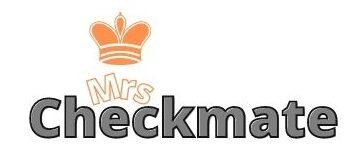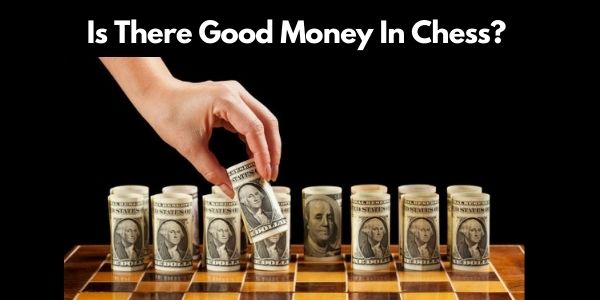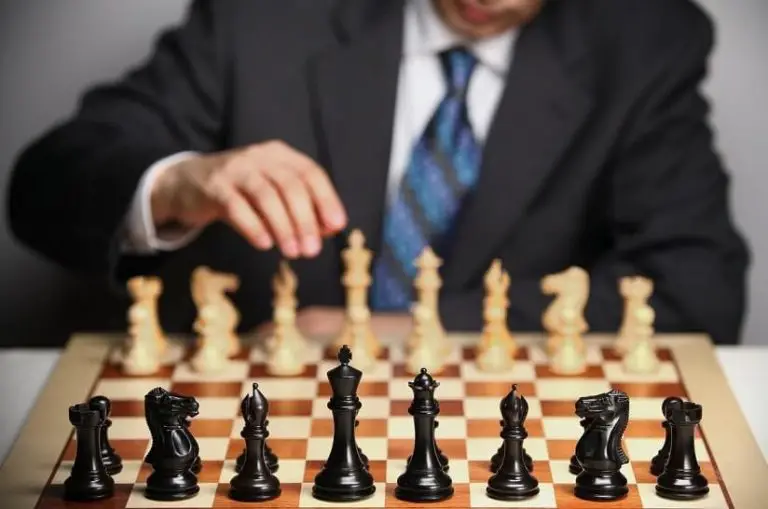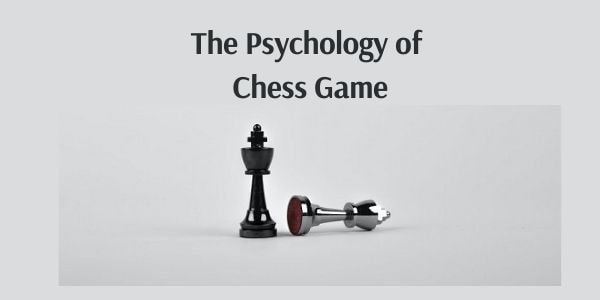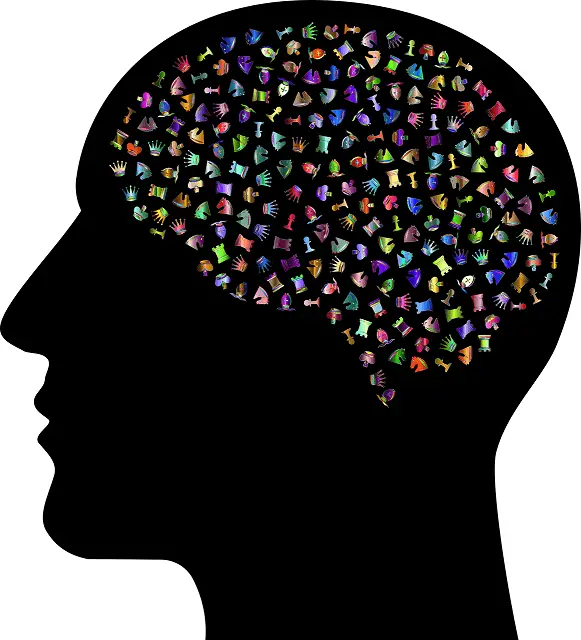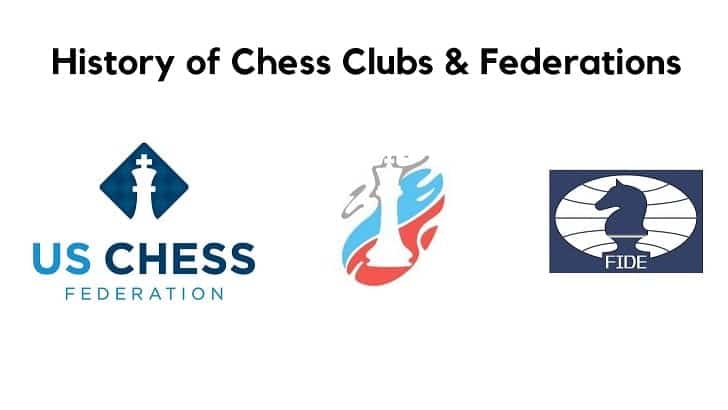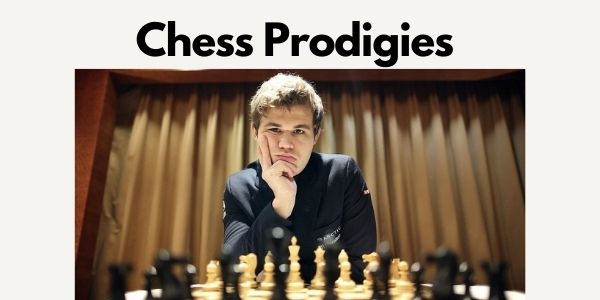How Far Ahead Do Chess Grandmasters Really See?
As you arrange your chess pieces on the board, a question might cross your mind: “Can grandmasters really see that many moves ahead?” It’s a captivating thought, one that adds to the mystique of the game. This ability to anticipate multiple steps into the future seems almost magical, something far beyond the reach of casual players. Yet, is it fact or mere exaggeration?
As we delve into the intriguing world of chess grandmasters, we’ll unravel the truth behind this claim. With each paragraph, you’ll step closer to understanding the prodigious minds of these elite players and, perhaps, begin to see the game in a new light.
So, let’s embark on this journey, examining the blend of strategy, prediction, and intuition that makes a chess grandmaster.
The Concept of Seeing Moves Ahead
Explanation of the Concept of Seeing Moves Ahead in Chess
When it comes to the intellectual battlefield of chess, players often find themselves asking, “Can chess grandmasters really see that many moves ahead?” The short answer is yes, but it’s not as simple as it sounds. Seeing moves ahead in chess, also known as chess foresight, is the ability to visualize and predict future positions on the chessboard. This is a skill that grandmasters have honed to an incredible degree.
Consider the game of chess as a branching tree. Each move sprouts further possibilities, creating an almost infinite maze of potential game progressions. Grandmasters have a knack for navigating this labyrinth, planning several moves in advance. For instance, the iconic Queen’s Gambit Opening demonstrates this forward-thinking strategy in action.
When a grandmaster deploys a move, it is not an isolated event. It is part of a greater plan, a grand scheme that unfolds over the course of the game. They are not merely reacting to their opponent’s moves, but proactively shaping the game towards a desired outcome.
The Role It Plays in the Game’s Strategy
Seeing moves ahead is a fundamental aspect of chess strategy. By predicting the opponent’s possible responses, players can prepare their own counter-moves, anticipate threats, and set traps.
However, seeing ahead doesn’t necessarily mean seeing everything. Even grandmasters can’t calculate all possible move sequences, given the astronomical number of potential games. According to a famous calculation by mathematician Claude Shannon, there are approximately 10^120 possible games – more than the number of atoms in the observable universe! So, rather than calculating every move, grandmasters focus on the most promising lines of play. They master this through years of rigorous training, pattern recognition, and intuition.
Let’s look at an example from our article on the Endgame: Rook vs Pawn. Here, a player’s ability to see moves ahead can drastically change the game’s outcome. A skilled player can use their rook to cut off the enemy king, while their own king captures the pawn. But without the foresight to anticipate this sequence, the player might miss this opportunity.
Seeing moves ahead is not just about tactical advantage. It’s also a form of risk management. If a player can foresee the potential consequences of a move, they can avoid unnecessary risks. This is particularly important in the endgame, where a single misstep can lead to a checkmate.
To fully grasp the concept of seeing moves ahead, one must dive deep into the rich world of chess psychology. Here, the cognitive processes behind this remarkable skill are explored, shedding light on the intricate workings of a grandmaster’s mind.
Seeing moves ahead in chess is not an unattainable skill, exclusive to the likes of Magnus Carlsen or Garry Kasparov. With dedicated practice, deep understanding of chess strategies, and a dash of chess psychology, even a beginner can start to see the chessboard with a grandmaster’s eye.
As we navigate further into this article, we will uncover how grandmasters manage to see moves ahead and the methods they employ to sharpen this crucial skill. Whether you are a beginner seeking chess tips, or an advanced player keen to gain an advantage in chess, you’re in for a deep dive into one of the most fascinating aspects of chess.
How Grandmasters Play Chess
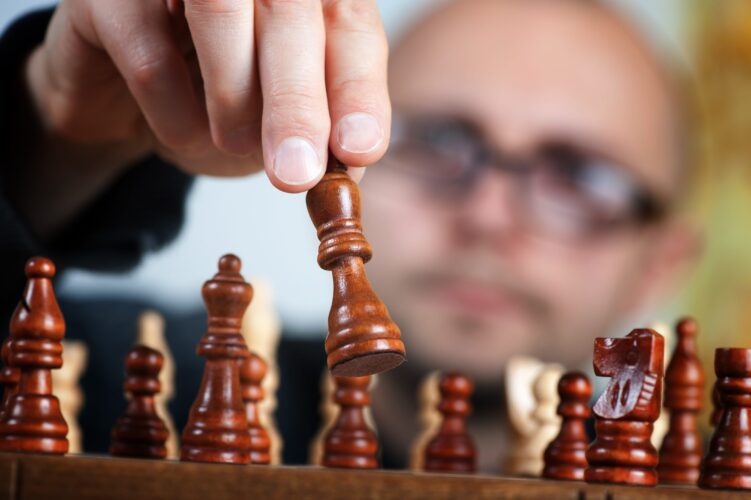
Overview of a Grandmaster’s Training and Skills
A grandmaster’s journey to the pinnacle of chess achievement is paved with hard work, dedication, and immense training. Their training revolves around a few fundamental areas:
- Deep knowledge of openings: Grandmasters spend countless hours studying chess opening principles and the historical progression of specific opening lines such as the Sicilian Defense or the French Defense.
- Endgame Mastery: An understanding of complex endgame scenarios, like queen vs pawn endgame or endgame rook vs pawn, is crucial to snatch victory from the jaws of a draw, or salvage a point when defeat seems inevitable.
- Tactical and Strategic Training: Grandmasters are adept at creating and exploiting tactical opportunities, and they have an uncanny ability to strategize. This is a result of rigorous training which allows them to see an advantage in chess games where others see a deadlock.
- Physical and Mental Conditioning: Being physically fit and mentally calm helps grandmasters endure long games. Many players incorporate exercises and activities like meditation into their daily routine.
- Continuous Learning and Improvement: Grandmasters continuously study games, learn from their mistakes, and strive to improve their chess game.
Exploration of Their Thought Process During the Game
Chess is often likened to a battle of minds, and grandmasters are the epitome of this battle. But what goes on in their minds during a game? Let’s delve into their thought process:
- Calculation and Visualization: When playing a game, grandmasters calculate several moves ahead. They have an in-depth understanding of the concept of seeing moves ahead. This isn’t magic but the result of rigorous training and their ability to visualize the chess board’s future state.
- Positional Evaluation: A grandmaster’s thought process isn’t just about calculating moves. It’s also about understanding the position on the board. They evaluate the position of their pieces, consider their opponent’s possible moves, and plan accordingly.
- Intuition and Pattern Recognition: Thanks to their experience and the thousands of games they’ve played or analyzed, grandmasters have developed a keen sense of intuition. They recognize patterns on the board that can lead to a tactical opportunity or a potential threat.
- Psychological Warfare: Grandmasters also employ chess psychology during the game. They read their opponents, adapt to their playing style, and sometimes even make moves designed to intimidate or confuse.
- Time Management: With the clock ticking, grandmasters must make important decisions within a limited time. They’re masters of time management, knowing when to think long and hard about a move and when to rely on their instincts.
Deep Dive: Can Grandmasters Really See That Many Moves Ahead?
When it comes to the game of chess, grandmasters are often touted as having superhuman abilities. One claim that is often made is that these top players can see several moves ahead during a game. But is this claim true? Let’s delve into this topic to find out more.
Analysis of the Claim
It’s common knowledge that chess is a game of strategy. Players must anticipate their opponent’s moves and plan their responses accordingly. But how far into the future can a player really see?
The answer may surprise you. According to a study by De Groot in 1946, expert players don’t necessarily see more moves ahead; they see the right moves. Instead of considering every possible move, they’re able to efficiently narrow down their options to a select few that make the most sense.
Indeed, this claim seems to be supported by the experiences of many grandmasters. Former World Champion Garry Kasparov once said that, under normal conditions, he can “see” three or four moves ahead. But this doesn’t mean he’s visualizing every possible outcome—instead, he’s focusing on the most likely scenarios and planning accordingly.
For further reading on this topic, you might find our article on “Can Grandmasters Really See That Many Moves Ahead?” useful.
Use of Expert Opinions, Studies, or Anecdotal Evidence
Expert opinions and studies are a great way to get a better understanding of this topic. As we’ve already mentioned, a study by De Groot in 1946 seems to support the claim that expert players see the right moves, not necessarily more moves.
Table 1: Summary of De Groot’s Study
| Study | Outcome |
|---|---|
| De Groot (1946) | Expert players see the right moves, not necessarily more |
Anecdotal evidence from grandmasters also seems to back up this idea. For instance, the grandmaster Neil McDonald once said that during a game, he’s usually only considering three or four moves ahead.
While not academic research, anecdotal evidence from such high-level players provides valuable insight into how grandmasters think during a game. If you’re interested in further exploring the mindset of chess players, we have an article on “How Do Chess Players Think?” that delves into this in more detail.
Additionally, you might also want to check out our feature on the “Best Chess Players in the World”, which provides more insights into how these grandmasters have mastered the game.
The Role of Intuition and Experience
Experience and Intuition: The Often Misunderstood Predictors
The art of predicting moves in chess is often attributed to a grandmaster’s extraordinary intuition and years of experience. However, these terms are frequently misunderstood. They may suggest that a grandmaster can glance at a position and mysteriously predict the future. In reality, chess is much more pragmatic and grounded.
Intuition, as applied to chess, is not some esoteric sixth sense, but a function of pattern recognition honed over years of dedicated practice and experience. As explained in our article on how chess players think, a grandmaster’s intuition is more about the ability to quickly identify a familiar pattern or structure in a position and recall the associated strategic concepts or tactical sequences. This is why experienced players seem to “see” the right moves quickly—they’ve seen similar patterns before.
Pattern Recognition: The Grandmaster’s Secret Weapon
In the chess world, grandmasters are known for their exceptional pattern recognition ability. According to a study published in PLOS ONE, experienced chess players can remember significant aspects of a chess position in a very short amount of time. This is often termed as the ‘chunking theory,’ and it plays a critical role in a player’s ability to predict moves.
Here’s how it works:
- Exposure to various positions: Over years of playing and studying, chess players are exposed to a vast array of positions. Our chess opening principles guide discusses many such common early-game positions, while the endgame rook vs. pawn article covers some typical endgame situations.
- Building a mental database: Each exposure adds to a mental database of patterns. With experience, players start recognizing common motifs, strategic ideas, and tactical opportunities in various positions.
- Quick retrieval of information: During a game, when confronted with a new position, experienced players subconsciously reference this database to find similar patterns. They don’t have to calculate all possible move sequences from scratch.
Thus, this pattern recognition ability should not be mistaken for a divine foreknowledge of future moves. It is, instead, an outcome of years of dedicated study and play, and an understanding of the recurring themes in chess positions.
The Limits of Prediction in Chess
Understanding the game of chess involves accepting that even the most complex calculations can be hampered by the unpredictability inherent in the game. This unpredictability introduces fascinating dimensions to the game, making it an enduringly popular mental challenge.
Variables in Chess that Limit the Prediction of Moves
Despite the precise and rigid rules that govern how the chess pieces move, the number of possible games that can be played is astronomically large. This variety imposes significant constraints on the ability to predict moves. Let’s consider some of these variables:
- Complexity of the Game: The game of chess, with its 64 squares and 32 pieces, can take on an estimated 10^120 distinct game states, a number known as the “Shannon number.” This complexity outstrips any computational ability to fully predict the game’s outcomes.
- Opponent’s Strategy: An opponent’s strategy can shift, adapt and evolve throughout the game, thereby adding to the unpredictability of the game. You might enjoy reading our post on Chess Psychology, which discusses how a player’s mindset affects their game.
- Mistakes and Blunders: Chess is a human game, and even grandmasters occasionally make errors. These unpredictable events can drastically change the course of the game and defy prediction models.
- Endgame Complexity: Endgames, especially those involving pawns, like the queen vs. pawn endgame, can be incredibly complex to predict due to the potential for promotion.
The Horizon Effect in Chess AI
When it comes to artificial intelligence and chess, one limitation that often comes up is the “horizon effect”. This term, first coined in the context of chess-playing computer programs, refers to the inability of a machine to evaluate what lies beyond the limit of its calculation. The machine might overlook a significant threat that exists beyond its “horizon”, leading to miscalculations and strategic blunders.
To better understand the concept of the horizon effect, picture a sunset. As you look towards the horizon, you can see where the sky meets the land or sea. But you can’t see what’s beyond that point. It’s the same for a chess AI: it can calculate a set number of moves ahead, but it can’t evaluate the positions that would arise from moves beyond that limit. Read more about chess AI’s prediction capabilities in our post on How Do Chess Players Think.
The Role of Strategy versus Seeing Moves Ahead
Differentiating between strategic play and predicting moves
In the grand arena of chess, strategic play and the prediction of moves are two of the fundamental pillars that sustain the framework of the game. While these two components might seem intertwined at first glance, they are inherently different in their characteristics and usage.
Strategic Play: Strategy in chess involves a thorough understanding of the game’s principles, coupled with a planned approach towards achieving your objectives. The chess opening principles we’ve previously discussed provide a solid foundation for strategic play. A well-devised strategy may incorporate key factors like controlling the center, developing pieces, ensuring the safety of the king, and preventing any foreseeable threats.
Predicting Moves: On the other hand, predicting moves involves an anticipatory approach, wherein players attempt to forecast their opponent’s potential moves. The art of seeing moves ahead is mastered by chess players over time, through pattern recognition, tactics training, and by playing a multitude of games.
How Grandmasters formulate and adjust their strategies during the game
When it comes to Grandmasters, the art of formulating and adjusting strategies during the game is carried out at an incredibly sophisticated level. Here are some key insights into how they manage this:
- Holistic Approach: Grandmasters tend to look at the chessboard as a whole, considering the overall positioning and potential interactions between all the pieces. This differs from less experienced players, who may focus more on localized engagements.
- Dynamic Strategy: The strategy adopted by Grandmasters is rarely static; it adjusts and evolves as the game progresses. When they think about chess, they consider the current board position, the likely responses of their opponents, and they even factor in the psychological aspects of the game, an element we’ve discussed in our chess psychology article.
- Multi-move Planning: Grandmasters often plan several moves ahead, considering not just a single line of play, but multiple scenarios and counter-responses.
- Pattern Recognition and Experience: Grandmasters can recognize familiar patterns quickly due to their vast experience. Whether it’s an endgame with a rook versus a pawn or a queen versus pawn endgame, they’ve played, studied, and internalized these patterns.
- Utilizing Time: How to use the analog clock in chess is an essential skill, especially in a competitive setting. Grandmasters manage their time meticulously, allowing them to think deeply when necessary and play quickly when appropriate.
- Adapting to Opponent’s Play: A crucial aspect of Grandmaster play is the ability to adapt. If an opponent springs a surprise or deviates from known opening lines such as the Sicilian Defense or the Queen’s Gambit opening, the Grandmaster can adjust their strategy on the fly, incorporating their vast knowledge and experience into a new game plan.
To understand the depth and complexity of strategic play and move prediction, it’s crucial to study and play the game regularly. Whether you’re using a classic wooden chess set or you prefer a themed chess set, the core elements of strategy and prediction remain the same.
Conclusion
The dichotomy between strategy and prediction in chess is not only fascinating but also fundamental to your growth as a player. Remember, strategic play forms the core of your game, acting as a blueprint for your actions on the board. It encompasses everything from the initial opening principles to complex maneuvers in the endgame scenarios like checkmate with a bishop and a knight.
On the other hand, predicting moves requires a keen insight into your opponent’s mind, trying to anticipate their actions before they happen. It’s like a mental game of cat-and-mouse where you try to outsmart your adversary at every turn.
But how does one truly master these aspects of chess? Well, one of the most straightforward ways to improve your game is through regular practice and deep analysis of your games and those of grandmasters. By continually challenging yourself and pushing your boundaries, whether you’re playing on a travel chess set on a long journey or honing your skills using a tournament chess set at home, you gradually develop an intuitive understanding of chess.
Moreover, staying curious about the game is equally important. There’s a vast ocean of chess knowledge out there, from the history of chess clubs and federations to the mind-boggling exploits of chess prodigies. The more you immerse yourself in the chess universe, the deeper your understanding and appreciation of the game becomes.
In conclusion, both strategic play and predicting moves are integral to chess mastery. Whether you’re just starting out with chess tips for beginners or are already well on your journey to becoming a Candidate Master, honing these skills will surely level up your game. Remember, chess is not just about the pieces on the board; it’s also about the player behind them. Happy gaming!
FAQ
Q1: How many moves ahead can a Chess Grandmaster typically see?
A1: Grandmasters can anticipate up to 20 moves ahead in specific situations, but usually focus on evaluating a few promising moves based on strategic planning.
Q2: What is the role of strategy in a Chess Grandmaster’s play?
A2: Strategy plays a crucial role, allowing Grandmasters to formulate plans and adjust them based on the evolving game situation.
Q3: What is the ‘horizon effect’ in chess AI?
A3: The ‘horizon effect’ refers to the inability of chess AI to foresee consequences beyond a certain number of moves, limiting their ability to plan effectively.
Q4: How does the calculation depth of a Grandmaster differ from an amateur player?
A4: Grandmasters often calculate fewer variations but focus on more strategic and promising moves, while amateurs may explore more branches without as much strategic depth.
Q5: Do Grandmasters rely solely on their ability to see ahead to win games?
A5: No, along with seeing moves ahead, they use strategic understanding, pattern recognition, and experience to gain an advantage.
